Wild plums are in season right now in the Midwest, and this ketchup is one of my favorite wild plum recipes.
Seven years ago, I put up a recipe for ketchup made from wild plums (Prunus americana or nigra will both work, as well as any common plum or stone fruit you like).
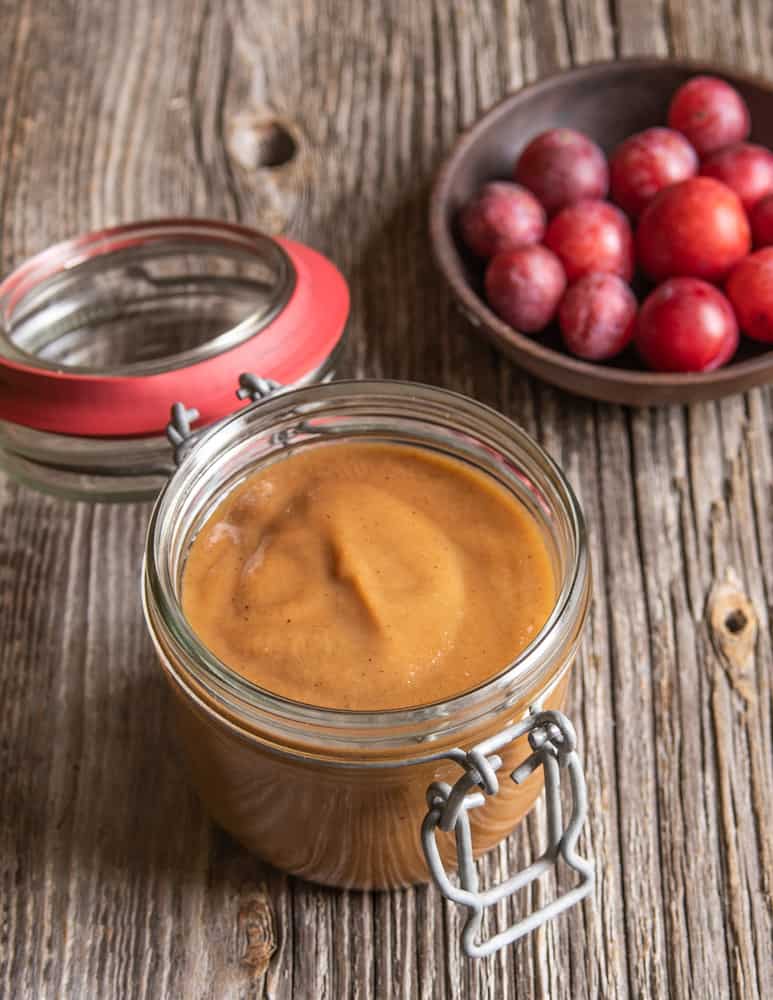
It worked, but, it was from the days of my cooking with wild plums where I was still assuming I could treat them like regular plums, meaning that I used both the flesh and skin of the plums.

Wild plums are a completely different animal from plums most people are familiar with. If you've tasted Prunus americana, you'll know that the skins are tough, and very tannic. So tannic.
While the skins of the plums gave the sauce an attractive color, the finished product still had more tannins than I would've liked.
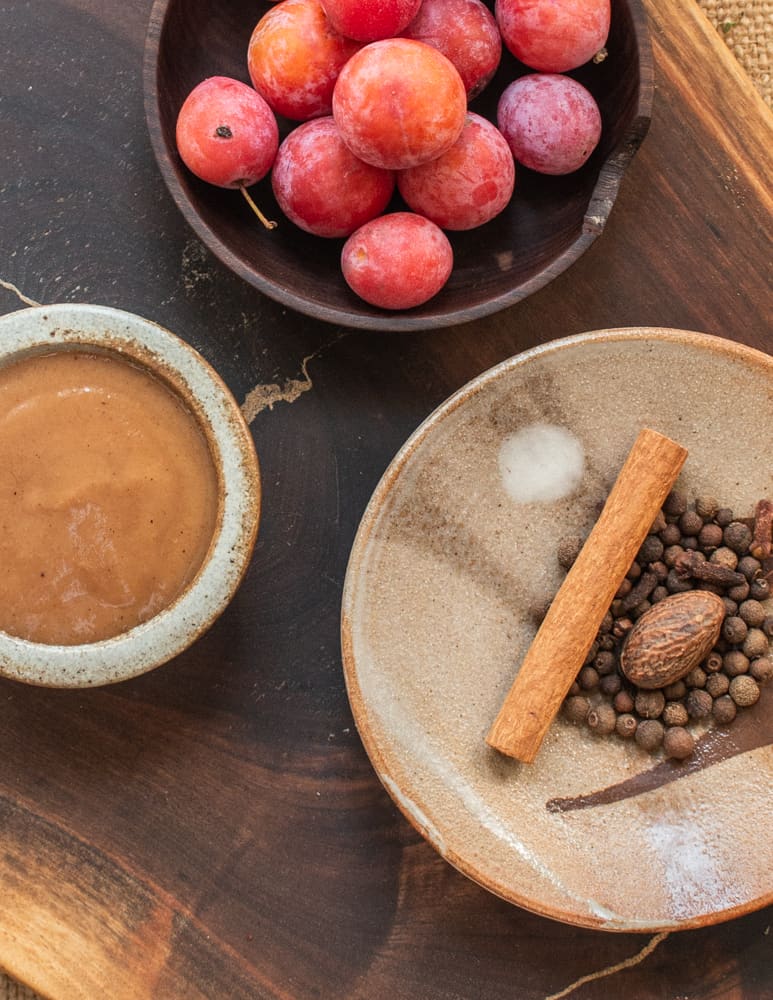
A few years ago, inspired by cooking techniques from the Caucuses, I started trying out different methods to extract the pulp of the plums in an attempt to mitigate the tannins as much as possible.
I use different methods depending on how I'm feeling, but baking, steaming, or freezing to soften them all work, allowing you to extract the pulp without cooking them with liquid that quickly transfers the tannins from the skins into whatever you're making.
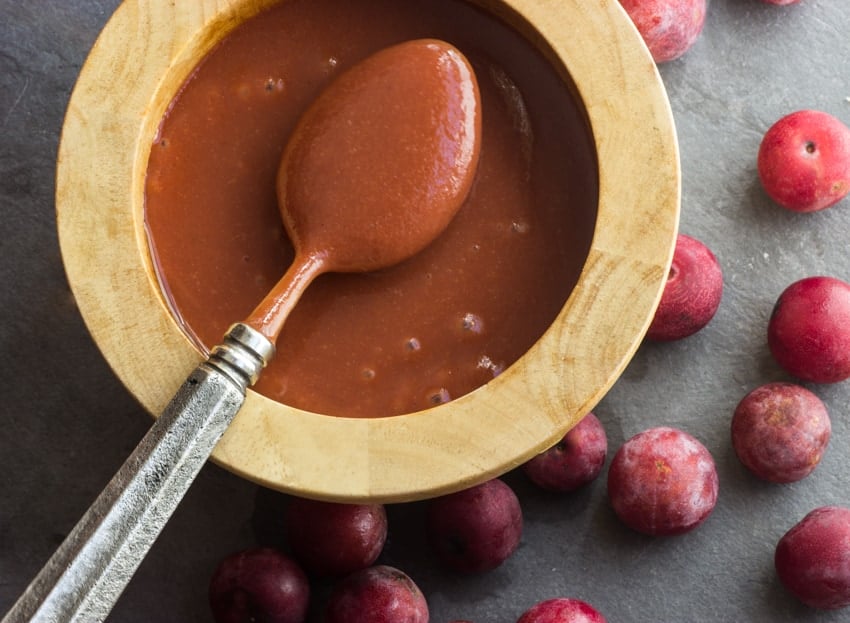
Reworking the wild plum ketchup has been on my list to do for ages, so I'm finally giving it a fresh coat of paint and updating it with the newer version that is far less tannic.
As a trade-off, the finished sauce won't have the bright red cast of the original one, but it also doesn't have the pronounced tannins, and, if you know the puckering wild plum punch I'm talking about, you'll know that's a good thing.
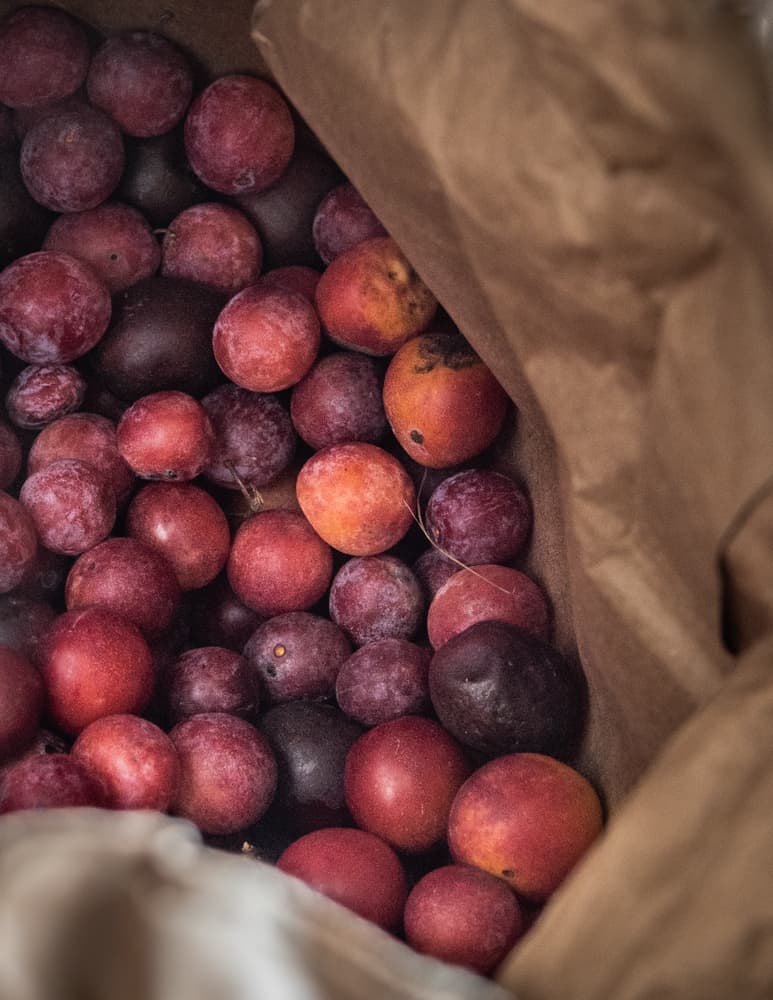
The original version the sauce is based on was one of my favorite condiments my former chef, mentor and friend Chef Lenny Russo used to keep on regular rotation at Heartland Restaurant in St. Paul (I'm pretty Chef prefers the word catsup to ketchup too, for what it's worth).
It's an addictive, slightly spicy, sweet and sour sauce that is good on all kinds of things. Rumor has it Chef even served it with French fries during his tenure at W.A. Frost in St. Paul, or so I've been told.
Mostly, it's a sauce I use with grilled meat, especially chicken and pork, but I also remember one of my old co-workers on the line serving it with fried cheese curds, as well as cheese and charcuterie plates, which should tell you something about it's versatility.
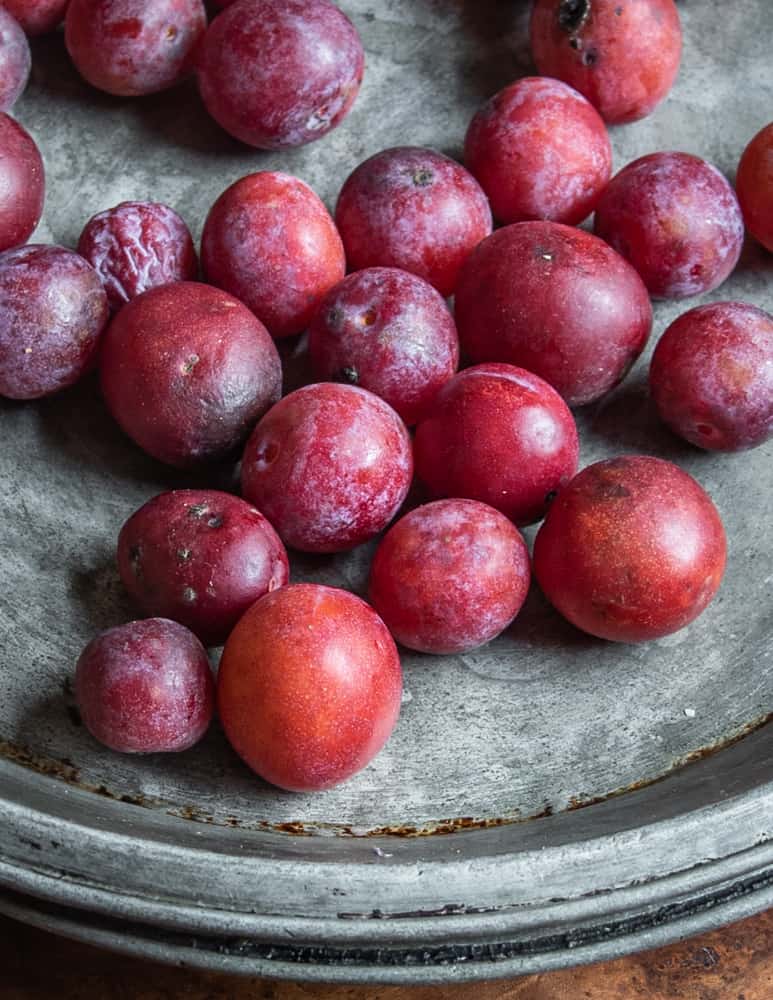
I love condiments and sauces as most people do. But, one of the best parts about this is that it's a non-jam or jelly product of wild plums that's shelf-stable, can be water bath processed and put up for the cold months, and, most importantly, isn't aggressively tannic.
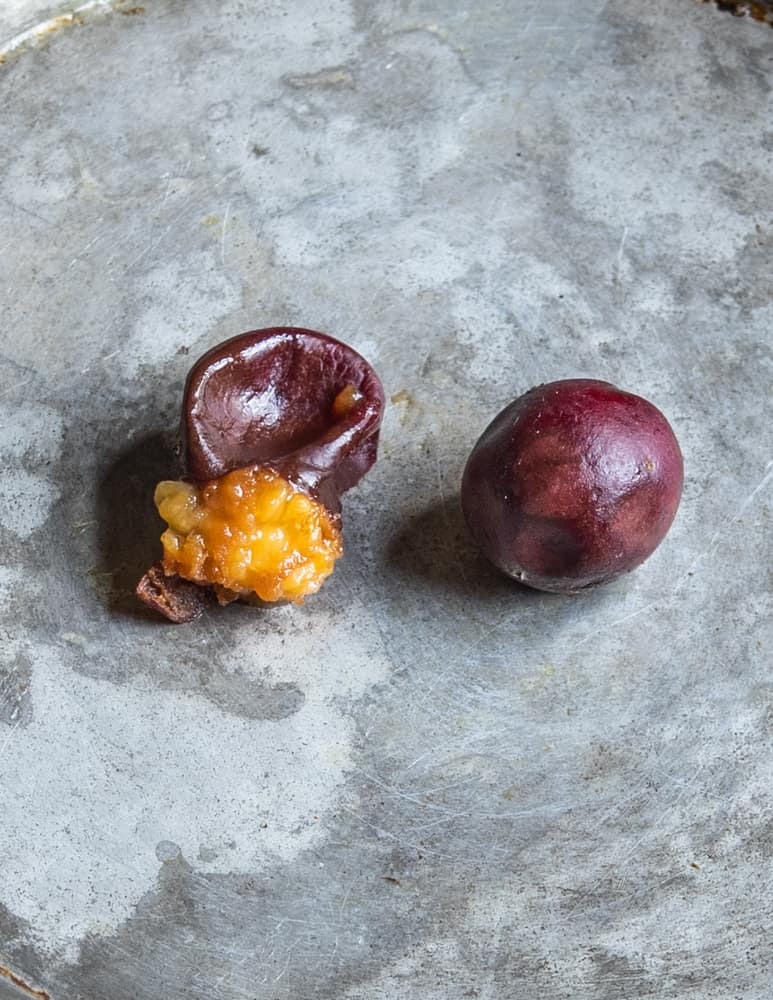
I served the new wild plum ketchup, along with a few other sauces I was testing out for my book (the plum ketchup, along with the entire fruit chapter got cut, unfortunately) to a few groups of people who had never had American wild plums last year, and, it was the crowd favorite.
The other two sauces I forced people to taste repeatedly were the ramp leaf steak sauce and mushroom chili crisp, both of which made it into the book, and are also good, but are stronger tasting and/or relatively spicy, at least for Midwestern palettes. If you have the book, make a note of those too.
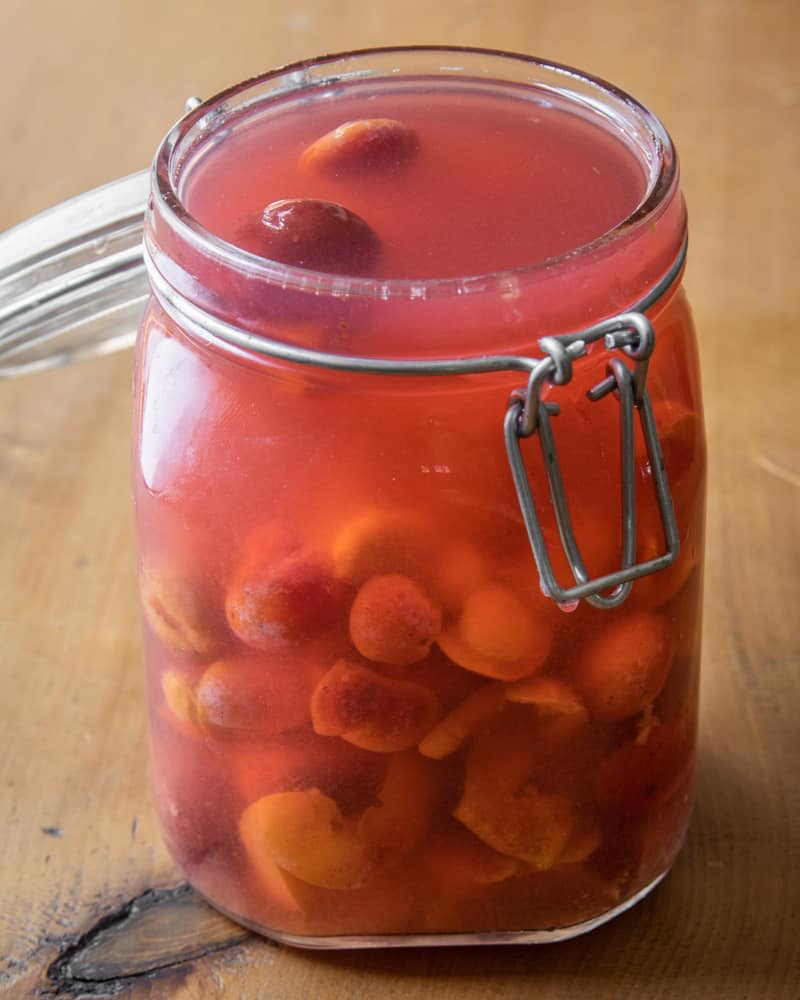
If you have some wild plum trees near you, and still have plenty of jam bumping around in the pantry from last season, give it a shot.
There's some detailed notes in the recipe to take a look at too, most important being the vast difference in size of wild plums, which affects the yield of pulp, making the recipe by nature flexible, and open to some interpretation. Lastly, don't forget that the spent skins and stones leftover from making the plum coulis make a great fermented fruit scrap vinegar.

Wild Plum Ketchup
Equipment
- 1 Colander
- 1 Blender
- 2 pint mason jars or 1 quart mason jar for storing or canning
Ingredients
- 4-6 lbs wild plums depending on size (*see note). 3 cups of fruit puree the consistency of apple sauce can be substituted.
- 2 cups water at room temperature
- 1 cup brown sugar
- 1 cup apple cider vinegar
- ½ teaspoon salt
- 1 small onion about 4oz, roughly chopped
- 2 tablespoons flavorless cooking oil
- 1 tablespoon minced ginger
- 2 tablespoons minced garlic
- ¼ teaspoon cayenne or hot chili sauce to taste
- ¼ teaspoon about 5 whole ground cloves
- 1 teaspoon ground allspice
- ½ teaspoon about ½ a whole nutmeg ground or grated nutmeg
- ¼ teaspoon ground cinnamon
Instructions
Extracting the plum coulis
- Wash the plums, then preheat the oven to 350. Roast the plums for 10-15 minutes, or until they’re tender, starting to split, and give when touched. Remove the plums from the oven, transfer to a bowl, and cool until you can handle them. You can also steam or freeze the plums to soften them.
- Pour the water over the plums, and, using gloves (optional) mash the plums very well, until a loose puree forms and they’ve given up their pulp.
- Pour the plum puree, skins and stones into a colander over a bowl, and gently press around on the mass to pass through as much of the puree as you can.
- Resist the urge to add more water to extract extra puree from the skins and seeds, as it will give you a thin sauce.
- You can definitely get a “second wash” from the skins and stones, adding a little more water and mashing to extract more puree, which will be looser, and good added to mixed fruit jams, etc. The finished mash of skins and stones will also make great vinegar.
- After passing the plum puree through the colander, You should end up with about 3 cups of very thick puree, about the consistency of apple sauce.
Finishing the sauce
- Next, sweat the onion, garlic and ginger in the oil for 5 minutes or until translucent, then add the sugar and vinegar and reduce by half.
- Add the plum puree, salt, and spices, heat through, and, if needed, continue reducing until you have about 4 cups of coarse puree.
- Transfer the mixture to a blender, working in batches if needed, and puree until very smooth.
Preserving
- This is the same as jarring and canning jams. Transfer the ketchup to pint mason jars and process in a water bath canner for 10 minutes. You can also freeze, or just store in the refrigerator, where it will last for months. Canned plum ketchup will last for a long time, at least until next season.


Roxy
Just finished making a batch of this from some wild Mexican plums. I ended up having to freeze the puree for a couple weeks and by the time I got around to it, the vinegar I had started from the scraps was ready to use too! A thrilling discovery! I went a different way with the spices, just using bay leaves and a bit of mugwort salt I had lying around, but the result is gorgeous. So pleased I made this, 10/10 recipe!
Alan Bergo
Hey thanks Roxy. Yes the spice blend in the recipe is tried and true but you can play around with it however you like.
Jacqui
I made something almost the same (no nutmeg but pretty much identical otherwise) out of cornelian cherries (Cornus mas). Do you know these? The large-fruiting dogwood that is planted as an ornamental all over the place and that is covered in yellow flowers before it leafs, here usually in early March? Maybe your winters are too cold, but here it's the mainstay of parks and gardens and nobody west of Lebanon appears to know you can eat it, so I have free reign.
They are a pain to pit - I cook them whole and then pit them by hand. It's a lot like pitting olives.
But they make killer jam and great catsup.
I know people do grow these in the US. If you can lay your hands on any they are really good.
Rose
Interesting about dogwood. I have lots of red dosier dogwood that has small berries on them. I wonder if those are edible?
Bill May
Ooh. I’m going to try this with beach plums. Particularly interested in your method of skinning and pitting! I usually eat the skins but they are quite tannic often and pitting the suckers is reeeeally time-consuming and messy the old-fashioned way.
Lenny Russo
Glad to see your revisions of my original recipe that I created in 1989 for Fetzer Vineyards to pair with their Zinfandel. At the time, they were very forward thinking and promoted American regional cookery. I was one of five chefs chosen to represent the Midwest. There's more to that story that has nothing to do with catsup.
Catsup or ketchup, they are two different words for the same thing. I chose catsup to differentiate my fruit sauces from Heinz tomato ketchup. I believe they adopted that name in the 1880's, and, like you, over the years I created catsup recipes for a number of fruits including peaches, apricots, cherries and various berries, all variations on the original designed to draw out the best characteristics of each fruit.
The catsup I served at W.A. Frost was actually my version of tomato catsup. It wasn't a big hit with the Heinz and Hunt crowd because it didn't possess the radical sugar content of commercially produced ketchup. Since that time, I have taken to using commercial ketchup as a base for my tomato catsup and altering it with spices to give it a personal touch. Ketchup lovers seem to like it better that the store bought variety. I still make my version but only for home use.